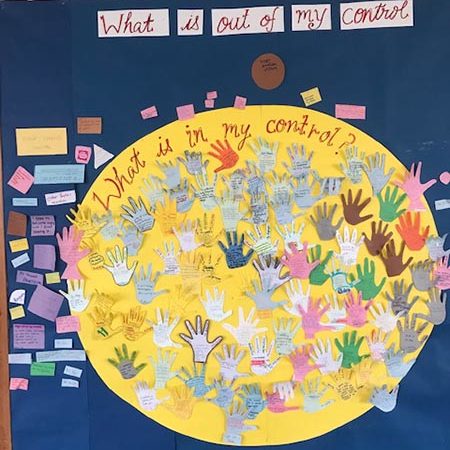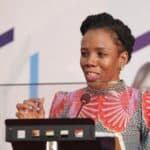When the Internet seems to have the answer for everything, how can we enable students to come up with original ideas? Five educators share their strategies for encouraging creative thinking among students.

When we asked the IB Twitter community “In an age in which students Google everything, how do you teach them to come up with original ideas?” we had no idea that this issue would resonate well with our community, as we had nearly 100 comments on the post.
In the first part of this blog series, teachers have expanded on their tweets, detailing the innovative strategies they use to encourage independent thinking in their students, from asking the right questions to celebrating ideas.
Ask questions that Google doesn’t answer, or at least not easily
It seems like Google has the answer to so many questions, no matter how specific. How do we develop true inquirers in a world where answers are easily accessible? We ask bigger questions, ones that almost resist answering. This is so much fun in theory of knowledge (TOK). I can start a class by asking, “What is art”, or, “What does it mean to be good”
It is also effective in my language and literature class where I can ask a question such as “What is a word?” or “What is more important; feelings or knowledge?”. These questions stimulate debates.
Andrew Price, English and theory of knowledge (TOK) teacher and Career-related Programme (CP) coordinator at Antioch High School in Tennessee, U.S.
“The heart of inquiry is in the pursuit of the unknown. It is chasing after the hard or impossible to know.”
Celebrate ideas
Motivation and encouragement are ways that help children feel emotionally safe to share their ideas. When mistakes are not underlined, different perspectives can be heard, discussed and reflected upon, and students want to explore further.

I use, ‘wow walls’—where students’ work is displayed—to showcase their ideas. We revisit the wow walls in the classroom and questions that are displayed on the walls are inquired into as a group through books, interviews, data collection and, of course, circle time.
Time-tabled maker-space sessions also encourage children to make ideas concrete and restructure their thoughts.
And I make sure there is, ‘time to do nothing’, planned as a free lesson. Play and unstructured learning as free time for students to ideate their thought process is a magical medium.
Aarti Bakshi, SEN counsellor for the Primary Years Programme (PYP) at Pathways School Noida in India
Use the SCAMPER framework across subjects
I try to help my students generate ideas and analyse problems in a new way by borrowing the SCAMPER framework that many design teachers may be familiar with. SCAMPER is an acronym for Substitute, Combine, Adapt, Modify/Magnify/Minify, Put to another use, Eliminate and Reverse. It is a widely used strategy in design-thinking, particularly when generating new ideas to solve problems. As such, it can be applied to a variety of subjects. The basic premise is that new ideas are really just modifications and new ways of looking at old solutions and by applying one or all of these lenses, we can help students see a problem in a new way.
While I’ve used this in my Middle Years Programme (MYP) design LEGO robotics course, it occurred to me that the same lenses might also help my students enhance their conceptual understanding in my MYP individuals and societies, Diploma Programme (DP) history and global politics courses.
Take for example, ‘modify/magnify/minify’. In the context of global politics, it might help my students see problems from different levels of analysis: community, local, national, regional, international and global.
In MYP humanities, we often explore issues around sustainability and human-created systems. The, ‘adapt’, lens challenges students to think about how existing systems might be modified to achieve better results, or how a city’s transportation infrastructure might be adapted to accommodate bicycles rather than cars.
In DP history, students learn about historiography, that is, the way that different historians have viewed and interpreted the past. The, ‘combine’, lens of the SCAMPER concept might prompt students to incorporate elements of two differing historical interpretations to synthesize their own understanding.

The SCAMPER framework helps me guide students towards more conceptual thinking and to challenge the conventional wisdom about topics. It has helped students see things in new and innovative ways.
John Dugan, DP history and global politics, MYP individuals and societies and Lego robotics teacher at Qatar Academy Sidra in Doha, Qatar
Encourage students to read books
Reading develops understanding, imagination and creativity. Students need to read books, not simply tweets and posts. It’s a lengthy process that requires the encouragement and support of those around them. Read lots, and originality will come. I would recommend books that challenge students to see the world in a way that contrasts with their own personal experience. I would encourage them to read books that foster international mindedness and expand their imagination and capacity for critical thinking. For teenagers, Yann Martel’s Life of Pi is one that immediately comes to mind.
Paul Anthony Figueiredo, English teacher at Park International School in Lisbon, Portugal
Get students to work together to answer questions
Jigsaw learning is a useful strategy where students rely on one another to answer a particular concept/question. It can promote accountability of learners and empowerment as a group.
There are four stages: during the first stage, students are organized into Friendship, ‘home’, groups; with stage two providing further division within the, ‘home’, groupings into two halves. Each half is assigned a topic from the teacher to learn more about.
In stage three, the home groups are reformed and the teaching of material is shared between members. The process concludes with stage four, whereby each, ‘home’, group collates their newly acquired knowledge to produce or perform a given task.
In an MYP ultimate Frisbee unit of work for example, jigsaw learning was used as a tool to allow learners to assemble their understanding of key tactical approaches to the game. Learners put into practice principles of defensive and attacking tactical problems to experiment with decision-making in game play. By encouraging learners to listen to others, it gave voice to members of the class that previously had not been empowered to contribute so actively.
Helen Keane, senior lecturer in physical education, Institute of Human Sciences, University of Wolverhampton and former IB physical education coordinator
This article is part of a series of stories from IB World magazine that bring to life the wonderful initiatives undertaken by IB students and educators from around the globe. Follow these stories on Twitter, LinkedIn and Instagram and feel free to email us your story.
If you enjoyed this story, consider reading more below:



